-
Sale!
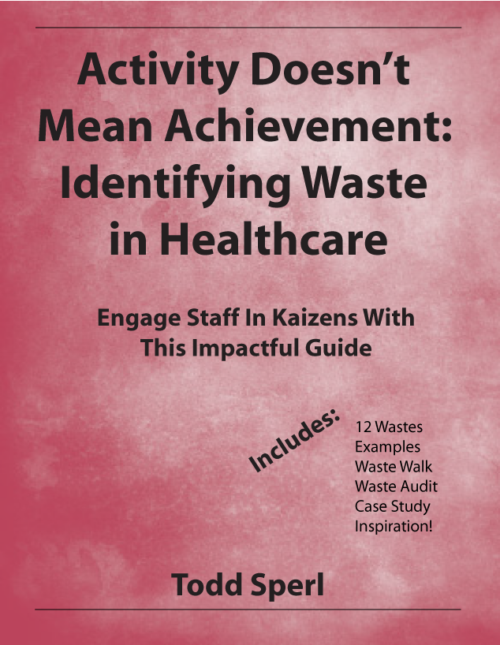
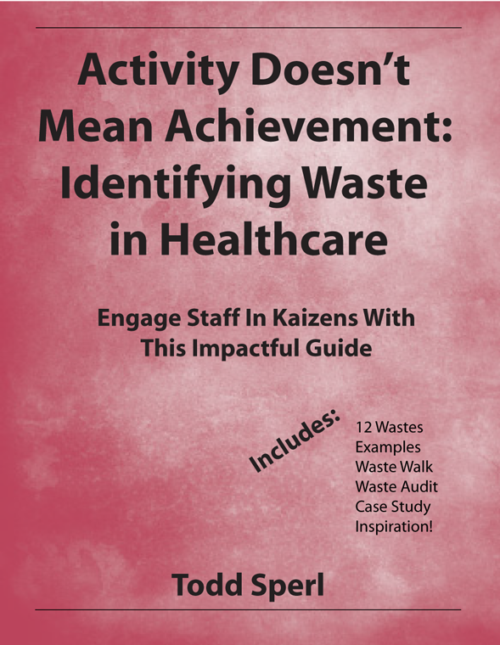 By: Todd Sperl Activity Doesn’t Mean Achievement: Identifying Waste in Healthcare provides a practical approach to educate and communicate to healthcare staff on the various types of wastes that may exist in their processes as well as provide guidance in possible ways to eliminate those wastes. Subsequently, individuals and teams can work to eliminate those specific wastes through Kaizen or Rapid Improvement Events. The purpose of this book is to provide:
By: Todd Sperl Activity Doesn’t Mean Achievement: Identifying Waste in Healthcare provides a practical approach to educate and communicate to healthcare staff on the various types of wastes that may exist in their processes as well as provide guidance in possible ways to eliminate those wastes. Subsequently, individuals and teams can work to eliminate those specific wastes through Kaizen or Rapid Improvement Events. The purpose of this book is to provide:- A standard communication platform for defining the 12 wastes for an individual as well as a team
- EXAMPLES of healthcare waste that may “trigger” ideas of wasteful processes in your facility
- Questions to help DETECT wastes in current processes
- Suggestions of Lean and Six Sigma methods to ELIMINATE wastes
- Innovative ways to conduct a Waste Walk
- An example of a Waste Audit and Waste Walk
- Space in the book to document current wasteful processes as well as ideas for eliminating those wastes
- Definitions for the basic Lean and Six Sigma tools
- A case study on how one facility used the simple concept of waste to engage staff in their Lean journey
-
Sale!
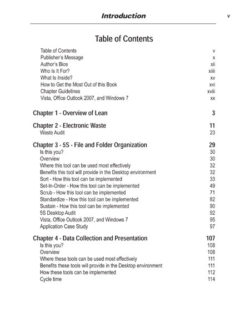
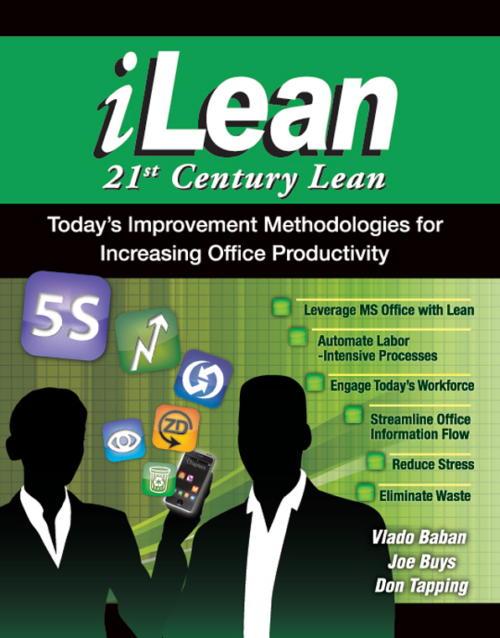 By: Vlado Baban, Joe Buys, and Don Tapping
By: Vlado Baban, Joe Buys, and Don Tapping
iLean's content will provide actual case studies, application examples, and working macros that have proven successful in improving information flow in all types of environments. iLean was arranged in a format that should provide you with enough detailed guidance (step-by-step instructions) to apply a similar-type Lean practice to your work process. Starting with Chapter 3, each chapter begins with a section titled Is this you? which was specifically designed to assist you in determining if that chapter has immediate relevancy to your current work challenges. Subsequently, it is suggested that a formal standard improvement methodology, Six Sigma's Design-Measure-Analyze-Improve-Control (D-M-A-I-C), Edward Deming's Plan-Do-Check-Act (PDCA) or some other similar methodology be used if a formal structure is required and/or more statistical analysis needs is required. However, many of the concepts and tools presented throughout this book can be implemented by an individual worker and, therefore, will not require a formal process (other than good project management skills). Microsoft s Office suite of products of Word, Excel, and Outlook, as well as Open Source applications of vTiger, Google Docs, and Huddle, are referenced throughout this book to provide an overall understanding of how Lean can be used to move information faster and more accurately than ever before. In doing so, you will be able to reduce inter-office dependencies, delays, and errors that may be present in your current business processes. -
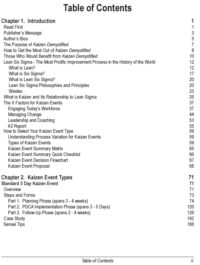
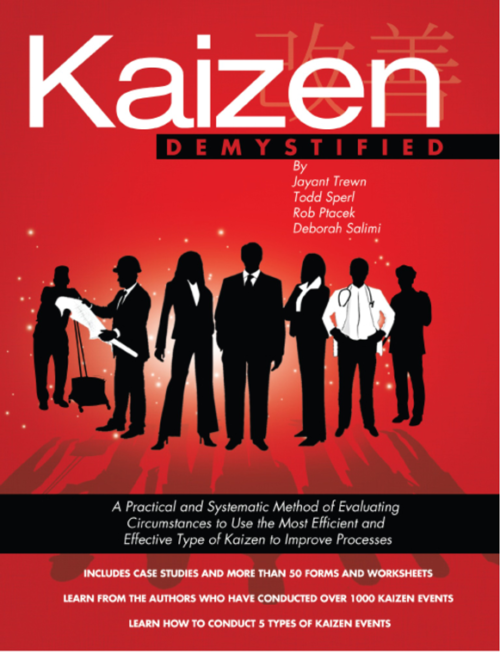 By: Jayant Twewn (PhD), Todd Sperl, Rob Ptacek, and Deborah Salimi (PhD)
By: Jayant Twewn (PhD), Todd Sperl, Rob Ptacek, and Deborah Salimi (PhD)
We are pleased to present Kaizen Demystified, perfectly timed for today s ever-changing and ever-demanding business environment requiring improved processes. Whether your industry is manufacturing, healthcare, financial, education, armed forces, services, government, or the construction industry, or, you are a manager, supervisor, team leader, or a front-line worker, this book will provide new insights and ideas for managing and facilitating continuous improvement and problem solving projects (i.e., Kaizen Events). Kaizen Demystified provides a simple and practical approach detailing five distinct methods on how Lean (and Six Sigma) tools and concepts can quickly and efficiently be applied and managed to solve business problems and improve processes. The five types of Kaizen Events detailed in this book are the: (1) Standard 5 Day Kaizen Event, also referred to as a Kaizen Blitz or Rapid Improvement Event, (2) Rolling Kaizen Event, (3) Web Based Kaizen Event, (4) Today's Kaizen Event, and (5) Wiki (or Quick) Kaizen Event. Each type will be thoroughly explained to demystify what it may mean for you. Kaizen Event Leadership is thoroughly explored in a separate chapter/section that relates to all types of Kaizen Events. It provides a listing of the common issues facing the leader of a Kaizen Event as well as suggested how-to leadership skills to address those issues. This is one of the most important aspects of leading any type of Kaizen Event. -
Sale!
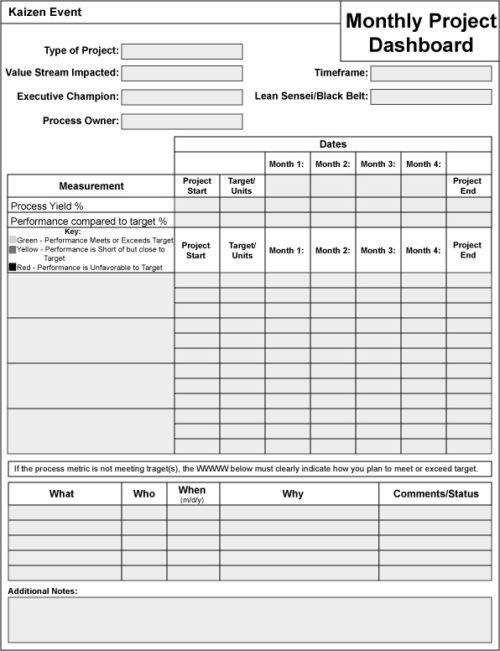
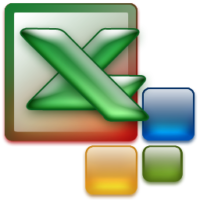 The Kaizen Demystified Worksheets allow you to customize the tools, concepts, practices, and worksheets demonstrated in the Kaizen Demystified book. These 46 electronic worksheets will allow for an effective and efficient application of engaging people in a Kaizen Event. Delivered as customizable Excel worksheets.
The Kaizen Demystified Worksheets allow you to customize the tools, concepts, practices, and worksheets demonstrated in the Kaizen Demystified book. These 46 electronic worksheets will allow for an effective and efficient application of engaging people in a Kaizen Event. Delivered as customizable Excel worksheets. -
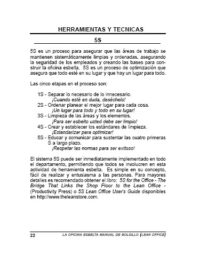
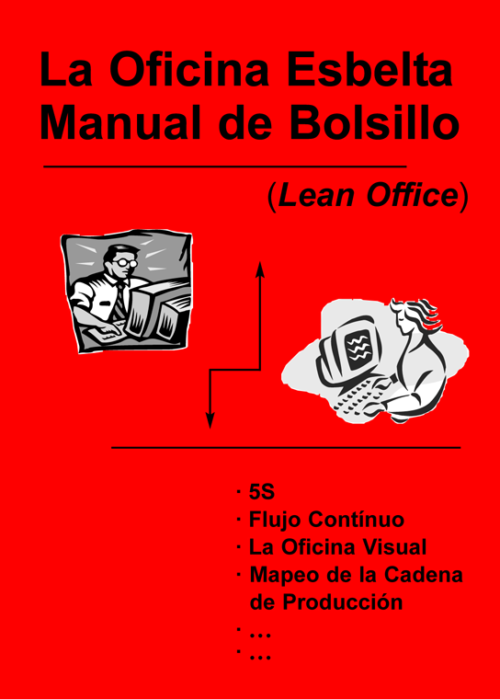 By: Luz Planco Cuando implemente la oficina esbelta, debe tener en cuenta que la implementaci n es una traves a cuando piense que ha llegado al final descubrir que habr n mucho m s "optimizaciones cont nuas" y cuando piense que alcanz la meta a n quedar n m s optimizaciones cont nuas por realizar. La meta final esbelta es la creaci n de una cultura de optimizaci n cont nua de cada d a, en todos los productos y servicios, por todo el personal. Una vez que usted tenga esto establecido, las herramientas esbeltas emerger n como palabras diarias, tales como 5S, kaizen y kanban.
By: Luz Planco Cuando implemente la oficina esbelta, debe tener en cuenta que la implementaci n es una traves a cuando piense que ha llegado al final descubrir que habr n mucho m s "optimizaciones cont nuas" y cuando piense que alcanz la meta a n quedar n m s optimizaciones cont nuas por realizar. La meta final esbelta es la creaci n de una cultura de optimizaci n cont nua de cada d a, en todos los productos y servicios, por todo el personal. Una vez que usted tenga esto establecido, las herramientas esbeltas emerger n como palabras diarias, tales como 5S, kaizen y kanban. -
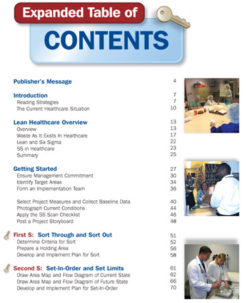
 By: Debra Hadfield (RN, BSN, MSN), Shelagh Holmes (RN), Tom Fabrizio, Roger Kremer, and Don Tapping
By: Debra Hadfield (RN, BSN, MSN), Shelagh Holmes (RN), Tom Fabrizio, Roger Kremer, and Don Tapping
Note: A Dropbox file link will be provided after purchase and the PDF can be used throughout your organization at no additional charge! This book is the first in the industry to offer real solutions and practical advice for improving patient and non-patient care processes, as well as reducing costs. Included in the book are over 20 forms, worksheets, and guidelines for you to use as a workbook as you implement your 5S portion of a Lean or Six Sigma project. Key learning features of this workbook include: 40+ digital photos demonstrating Lean and 5S projects, identification of who should be doing what part of the 5S activity, detailed procedures ensuring each 5S step is done thoroughly, started tips providing valuable insight from Lean Sensei, and quotes from various leaders throughout the world. -
Sale!
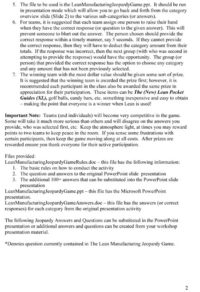
 The Lean Manufacturing Jeopardy Game is a highly-engaging game to reinforce Lean concepts presented throughout a training session or workshop. This activity is typically conducted at the end of a training session. Lean Jeopardy allows for the group to be energized with the information that had been presented, while at the same time having fun in a competitive manner. The Lean Manufacturing Jeopardy Game has four categories, What is it?, Why use it?, Where use it?, and Picture this? with 5 answers for each category. There is also an additional 100 answers provided in a Microsoft Word file from which you can cut and paste into the PowerPoint file for newer versions as you see fit. The new questions are referenced from The New Lean Pocket Guide (XL).
The Lean Manufacturing Jeopardy Game is a highly-engaging game to reinforce Lean concepts presented throughout a training session or workshop. This activity is typically conducted at the end of a training session. Lean Jeopardy allows for the group to be energized with the information that had been presented, while at the same time having fun in a competitive manner. The Lean Manufacturing Jeopardy Game has four categories, What is it?, Why use it?, Where use it?, and Picture this? with 5 answers for each category. There is also an additional 100 answers provided in a Microsoft Word file from which you can cut and paste into the PowerPoint file for newer versions as you see fit. The new questions are referenced from The New Lean Pocket Guide (XL). -
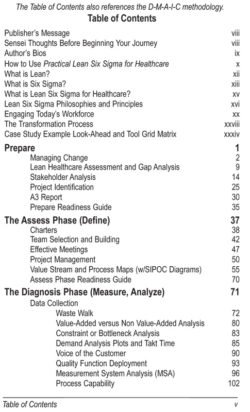
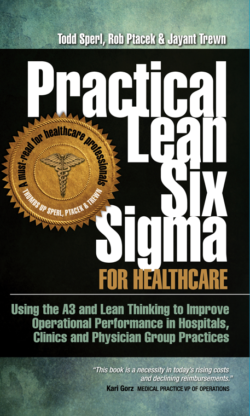 By: Todd Sperl, Rob Ptacek, Jayant Trewn (PhD)
By: Todd Sperl, Rob Ptacek, Jayant Trewn (PhD)
NOTE: This book in on backorder. Orders placed today will ship Monday, September 4th, 2023. We will upgrade the shipping at no additional cost. This book bridges the gap between a highly quantitative analysis of a process that requires extensive training (i.e., Six Sigma certification) and a more simplified approach that can be used and understood by the masses (i.e., Lean thinking). The goal of this book is to make the methods and tools of Lean and Six Sigma accessible to more people and provide a common sense or “practical” approach to problem solving and continuous improvement. This book is intended to be used by Sigma Belt Levels, Lean Senseis (i.e., teachers), Continuous Improvement Specialists, front-line managers, and supervisors of departments and work groups, and improvement team members in their efforts to improve the patient care experience while reducing waste and variation in all types of healthcare processes. The Lean Six Sigma tools and concepts are presented relative to the A3 road map to provide a definitive how-to guide to problem solving and continuous improvement (Kaizen) initiatives. -
Sale!
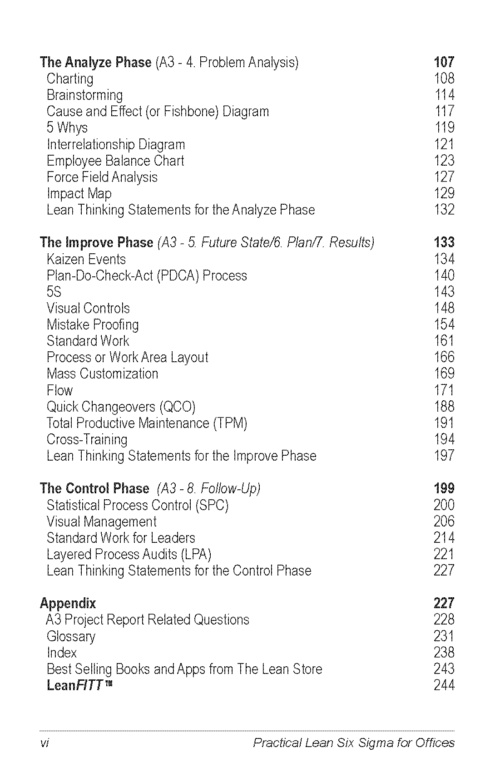
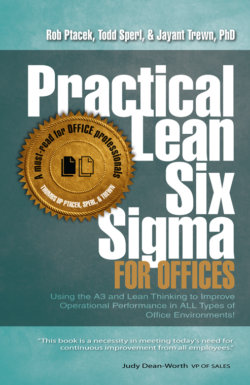 By: Rob Ptacek, Todd Sperl, Jayant Trewn, PhD This book bridges the gap between a highly quantitative analysis of a process that requires extensive training (i.e., Six Sigma certification) and a more simplified approach that can be used and understood by the masses (i.e., Lean thinking). The goal of this book is to make the methods and tools of Lean and Six Sigma accessible to more people and provide a common sense or “practical” approach to problem solving and continuous improvement. This book is intended to be used by Sigma Belt Levels, Lean Senseis (i.e., teachers), Continuous Improvement Specialists, front-line managers, and supervisors of departments and work groups, and improvement team members in their efforts to improve all types of administrative processes while reducing waste and variations, and engaging employees. The Lean Six Sigma tools and concepts are presented relative to the A3 road map to provide a definitive how-to guide to problem solving and continuous improvement (Kaizen) initiatives.
By: Rob Ptacek, Todd Sperl, Jayant Trewn, PhD This book bridges the gap between a highly quantitative analysis of a process that requires extensive training (i.e., Six Sigma certification) and a more simplified approach that can be used and understood by the masses (i.e., Lean thinking). The goal of this book is to make the methods and tools of Lean and Six Sigma accessible to more people and provide a common sense or “practical” approach to problem solving and continuous improvement. This book is intended to be used by Sigma Belt Levels, Lean Senseis (i.e., teachers), Continuous Improvement Specialists, front-line managers, and supervisors of departments and work groups, and improvement team members in their efforts to improve all types of administrative processes while reducing waste and variations, and engaging employees. The Lean Six Sigma tools and concepts are presented relative to the A3 road map to provide a definitive how-to guide to problem solving and continuous improvement (Kaizen) initiatives. -
Sale!

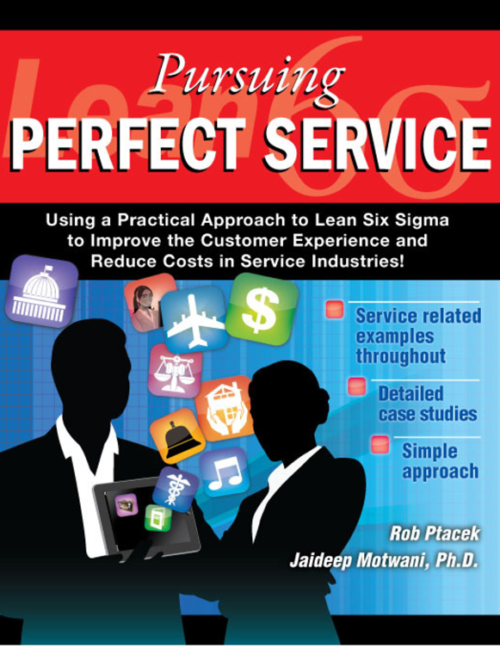 By: Rob Ptacek and Jaideep Motwani (Ph.D)
By: Rob Ptacek and Jaideep Motwani (Ph.D)
Note: Currently out of stock. Orders placed today will ship within 2 weeks! Pursuing Perfect Service is a comprehensive and detailed set of instructions on how to implement Lean and Six Sigma tools and concepts in a variety of environments. It will provide the solid foundation upon which Lean Sigma tools can be applied in any service organization. Service providers are continually processing daily requests and must know how to identify client needs and expectations, how to best satisfy their needs, and how to do it at the lowest possible cost. This book is a step-by-step implementation guide for continuous improvement while creating a solid foundation upon which to build a service excellence culture. Pursuing Perfect Service also provides insights and examples on how Information Technology can be used to improve data and information flow to enhance the overall client experience, while ensuring organizational profitability. -
Sale!
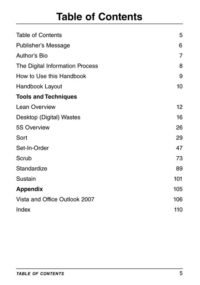
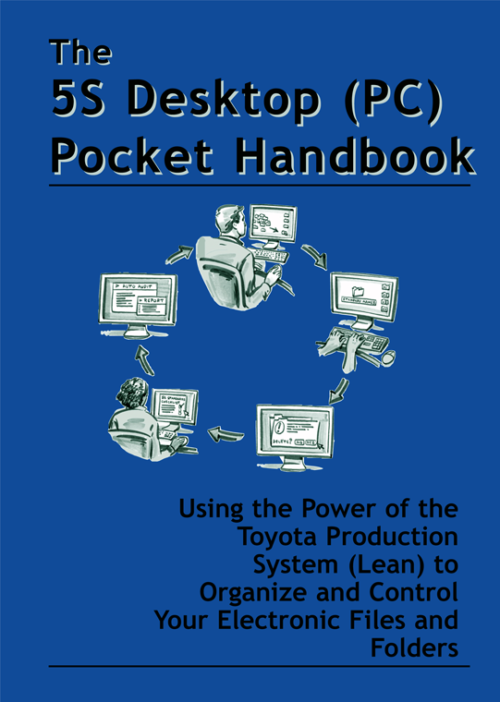 By: Vlado Baban
By: Vlado Baban
The 5S Desktop (PC) Pocket Handbook is a step-by-step guide for the implementation of 5S to all your electronic files. The XP version of Windows Explorer and the Office 2003 software suite were the versions used in creating this handbook. This handbook is designed to be:- An implementation guide. This handbook steps you through each phase of the 5S process. Examples are shown to assist you in this process. No two file systems (Desktops) are the same; therefore, use the examples as a guide when you apply that phase or step to your Desktop.
- A Lean beginning. 5S is a fundamental Lean tool and is considered the foundation for additional Lean tool application. Once 5S has been implemented and results have been obtained, there will be a need to integrate more Lean tools into your Desktop environment.
- A spark for the department. Once everyone understands the basic premise of Lean and 5S, then that understanding can serve as a catalyst for a more comprehensive application of Lean tools. (iLean and Lean Office Demystified II are available books on how additional Lean tools can be applied to your Desktop environment.)
- A bridge for improved performance. It is often stated that the average person at work today has nearly 80 emails to deal with on a daily basis. This, along with the other application files, can at times be overwhelming for the individual. Using 5S for organizing your emails, as well as the other application files, will greatly assist in managing this barrage of information. Implementing 5S to your files and folders will allow for a more stress-free workplace.

